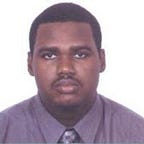How to learn fast
As a 12 year old trying to learn Pascal, trial and error was my bread and butter. Given the fact that back then I rarely read anything other than technical materials, my vocabulary was a bit low, so guessing was probably my only learning tool. I would see code in the dietel and dietel book or on the web and try it out. If it didn’t work, I would move things around until it did. In my little mind, I had created a list of possible solutions to make it work and would go through each systematically until something works. When I solved it, my mental model of how programming works was improved. After going through this process a number of times the mental model was complete.
I think when learning, everyone goes through this trial and error phrase where they try to understand what a given author is trying to say. The length of time spent learning is directly proportional to the possible solution space of the material being learnt. The goal of learning fast is to cut down this solution space of possible things the author could mean. This can be done by providing suitable examples and questions to test your mental model.
Thus, the road to learning fast begins by the selection of the correct materials from which to learn. The more examples, the easier it is to narrow the possible things an author could be trying to convey to you. The more the frequency of checking your mental model, the easier it would be learn material later on that rely on the current information being taught. It is very rare that I would come across a book with tons of examples and questions on every topic. Generally, it requires about 2 or 3 books on the topic, one book for examples and another for questions on the topic. I generally judge a technical book’s quality by the number of examples and the number of questions. I instantly toss any book without either examples or questions.
